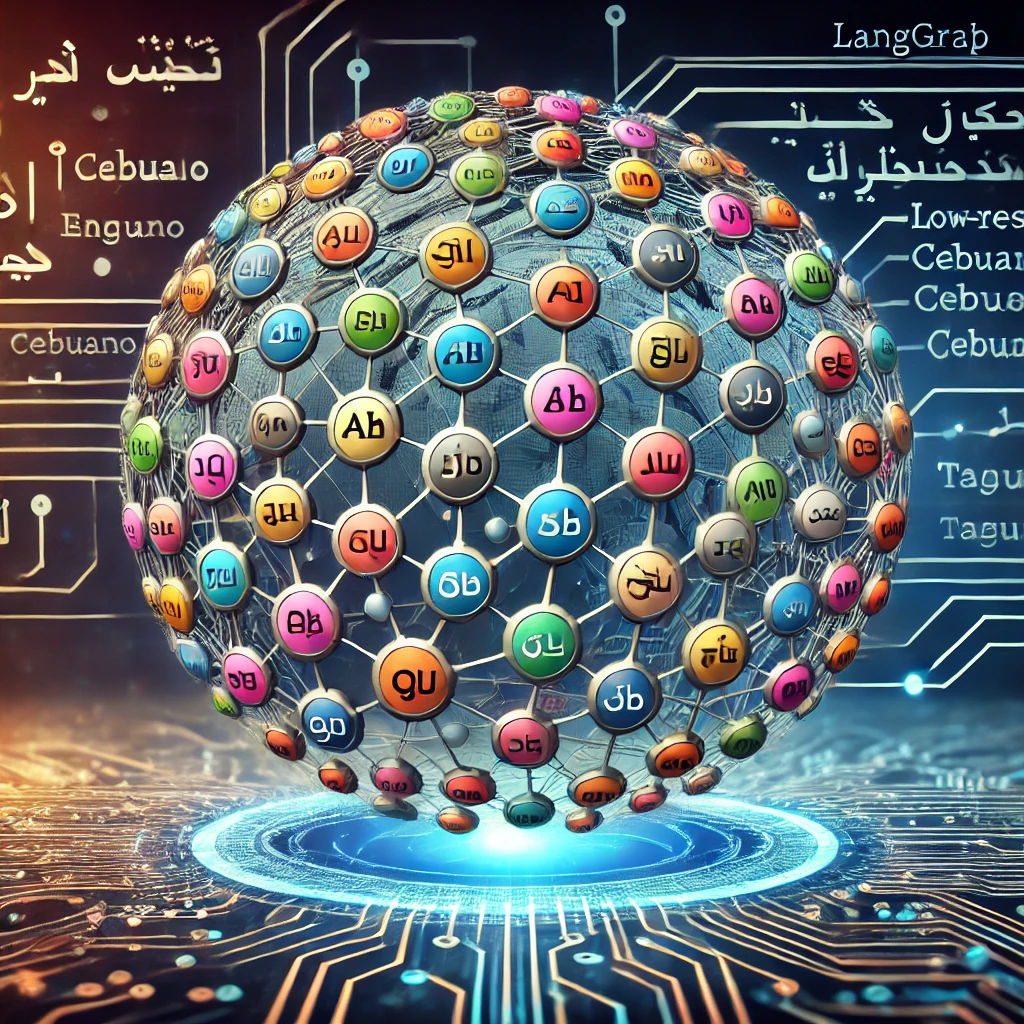In today’s globalized world, the need for multilingual capabilities in AI applications is more essential than ever. Whether it’s customer support, translation, or cultural research, leveraging language diversity is crucial to ensure inclusivity and effective communication. One technology at the forefront of this linguistic revolution is LangGraph, a framework that enables the creation of highly efficient multilingual AI solutions.
What is LangGraph?
LangGraph is an innovative language modeling framework that specializes in cross-lingual natural language processing (NLP). It empowers AI systems to comprehend, analyze, and generate language across different dialects and regional variations. LangGraph leverages graph theory to establish relationships between different languages, facilitating smoother translation, language generation, and machine understanding.
The power of LangGraph lies in its ability to model the connections between languages using shared linguistic structures. By constructing a graph that connects language families, dialects, and regional variations, LangGraph allows AI systems to efficiently transfer learning from one language to another. This technique is highly beneficial for low-resource languages, where data scarcity can often hinder the development of effective NLP solutions.
How Does LangGraph Work?
LangGraph uses multilingual embedding spaces to map languages into a shared vector space. This shared space allows the AI model to find similarities between languages, making it easier to transfer learning between them. The framework leverages graph neural networks (GNNs) to model relationships and hierarchies between languages, allowing for seamless translations and language understanding.
Here’s a simplified workflow of LangGraph:
- Data Collection: LangGraph first collects text data from different languages. This data includes translations, parallel corpora, and text from low-resource languages.
- Embedding Creation: Each language is embedded into a multilingual vector space, enabling the AI model to recognize similarities and differences between languages.
- Graph Construction: LangGraph creates a graph where each node represents a language, and the edges represent linguistic relationships such as grammar similarities or shared vocabulary.
- Cross-lingual Transfer: Once the graph is constructed, the model can perform transfer learning. For example, the model might leverage knowledge from a well-resourced language, like English, to understand or translate a low-resource language, like Cebuano.
- Training and Inference: After training the model using a combination of high- and low-resource language data, LangGraph can efficiently perform tasks such as translation, summarization, or sentiment analysis across multiple languages.
Applications of LangGraph
LangGraph’s versatility opens the door for a variety of multilingual applications. Some key use cases include:
- Multilingual Customer Support: Companies can use LangGraph to develop AI-powered customer support systems that respond to queries in multiple languages, enhancing accessibility and user experience globally.
- Cross-Language Information Retrieval: Search engines and databases can benefit from LangGraph by providing accurate and relevant search results across different languages.
- Low-resource Language Translation: LangGraph can boost translation quality in low-resource languages by transferring knowledge from well-resourced languages, expanding the inclusivity of AI applications.
- Sentiment Analysis: Multilingual sentiment analysis can benefit from LangGraph’s ability to accurately understand tone and context in different languages, making it ideal for market research, social media monitoring, and brand analysis.
LangGraph in the Philippines
In the context of the Philippines, where over 120 languages and dialects are spoken, LangGraph has tremendous potential. For example, developing AI models that support Tagalog, Cebuano, Hiligaynon, and other regional languages will promote inclusivity and improve the reach of AI-powered services across the nation. By connecting these local languages to larger language families using the graph-based approach, LangGraph can help bridge communication gaps in healthcare, education, and customer service.
The Future of LangGraph
As the demand for multilingual AI solutions grows, LangGraph will continue to evolve. Future advancements may include more sophisticated ways of handling code-switching (the practice of switching between languages in conversation), improving cultural context understanding, and expanding support for a broader range of dialects. LangGraph also holds potential for supporting sign languages and indigenous languages that are currently underserved by existing AI technologies.
In summary, LangGraph is revolutionizing multilingual AI solutions by utilizing graph theory to model linguistic relationships. Its ability to transfer knowledge between languages allows for enhanced natural language processing, translation, and understanding across diverse language families. With its potential to support low-resource languages and foster inclusivity, LangGraph is a significant player in the future of multilingual AI.
“I, Evert-Jan Wagenaar, resident of the Philippines, have a warm heart for the country. The same applies to Artificial Intelligence (AI). I have extensive knowledge and the necessary skills to make the combination a great success. I offer myself as an external advisor to the government of the Philippines. Please contact me using the Contact form or email me directly at evert.wagenaar@gmail.com!”
[SEO optimized]
